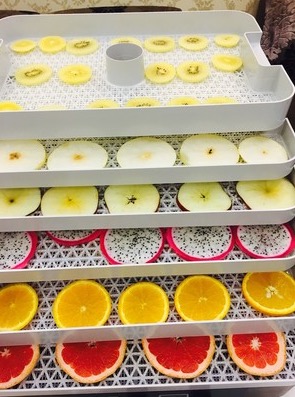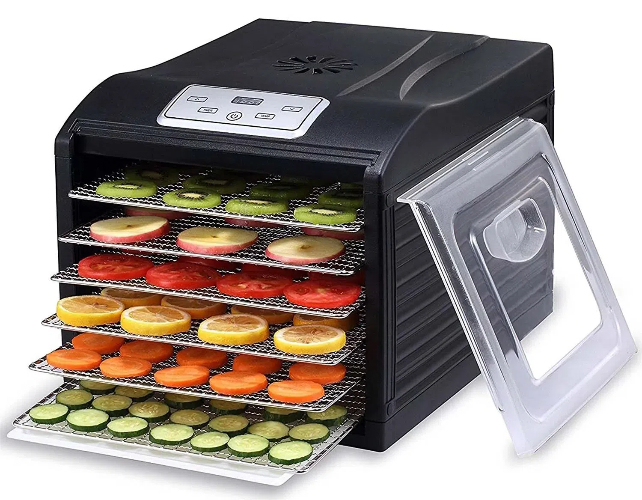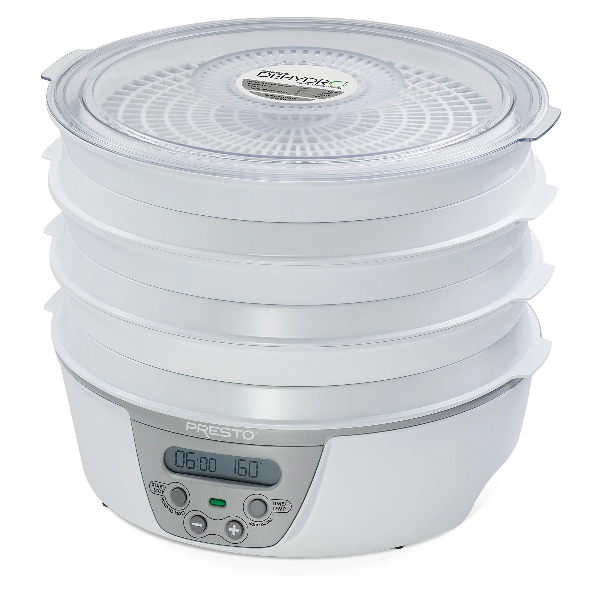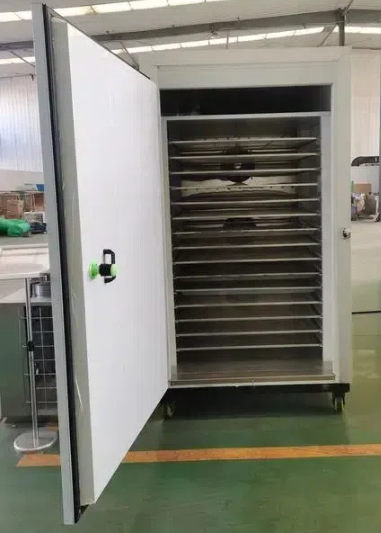
Content Menu
● Introduction
● What Is Heat Pump Dryer Technology?
>> How Heat Pump Dryers Work
>> The Drying Process Explained
● Advantages of Heat Pump Dryer Technology
>> 1. Energy Efficiency
>> 2. Preservation of Nutritional Value
>> 3. Versatility
>> 4. Reduced Risk of Over-Drying
>> 5. Environmentally Friendly
● Applications of Heat Pump Dryers in Food Processing
>> 1. Snack Food Production
>> 2. Herbal Products
>> 3. Meat Processing
>> 4. Dehydrated Meals
>> 5. Fruit Leather Production
● Choosing the Right Heat Pump Dryer for Your Business
>> 1. Capacity
>> 2. Temperature Control
>> 3. Energy Efficiency Ratings
>> 4. Maintenance Requirements
>> 5. Size and Footprint
● Future Trends in Heat Pump Dryer Technology
>> 1. Smart Technology Integration
>> 2. Enhanced Automation Features
>> 3. Advanced Control Systems
● Conclusion
● Frequently Asked Questions (FAQs)
>> 1: What is the main advantage of using heat pump dryers?
>> 2: Can all types of food be dried using heat pump dryers?
>> 3: How does heat pump dryer technology compare to traditional drying methods?
>> 4: What maintenance do heat pump dryers require?
>> 5: Are heat pump dryers environmentally friendly?
Introduction
In the food processing industry, drying is a crucial step that enhances the shelf life, flavor, and nutritional value of various products. Among the different drying technologies available, Heat Pump Dryer Technology has emerged as a highly efficient and environmentally friendly option. This article delves into the intricacies of food drying machines, focusing on how heat pump dryer technology revolutionizes the way food is dried.

What Is Heat Pump Dryer Technology?
Heat pump dryer technology utilizes a refrigeration cycle to remove moisture from food products. Unlike traditional drying methods that rely on high temperatures, heat pump dryers operate at lower temperatures, which helps preserve the quality of the food. This technology is particularly beneficial for drying sensitive products like fruits, vegetables, and herbs.
How Heat Pump Dryers Work
Heat pump dryers consist of several key components:
- Evaporator: Absorbs heat from the environment and evaporates refrigerant, which cools down the air.
- Compressor: Compresses the refrigerant gas, raising its temperature and pressure.
- Condenser: Releases heat back into the drying chamber while condensing the refrigerant into a liquid.
- Expansion Valve: Reduces the pressure of the refrigerant before it re-enters the evaporator.
This cycle allows for continuous moisture removal while maintaining optimal drying conditions.
The Drying Process Explained
The drying process in a heat pump dryer can be broken down into several stages:
1. Pre-Drying Phase: Initially, the food is placed in the drying chamber. The evaporator begins to absorb moisture from the food while cooling down the air inside.
2. Drying Phase: As moisture is extracted, the compressor increases the pressure and temperature of the refrigerant. The heated air is circulated through the chamber, allowing moisture to evaporate from the food surface.
3. Condensation Phase: The moisture-laden air passes through the condenser, where it cools down, causing water vapor to condense back into liquid form. This water is then drained away from the system.
4. Post-Drying Phase: Once the desired moisture content is achieved, the dryer can switch to a cooling phase to stabilize the product before it is removed.
Advantages of Heat Pump Dryer Technology
1. Energy Efficiency
One of the most significant benefits of heat pump dryer technology is its energy efficiency. These dryers consume less energy compared to conventional dryers because they recycle heat within the system. This feature not only reduces operational costs but also minimizes environmental impact.
2. Preservation of Nutritional Value
By operating at lower temperatures, heat pump dryers help retain essential vitamins and minerals in food products. This is particularly important for health-conscious consumers who seek nutrient-rich dried foods.
3. Versatility
Heat pump dryers can be used for a wide range of food products, including:
- Fruits (e.g., apples, bananas)
- Vegetables (e.g., carrots, tomatoes)
- Herbs (e.g., basil, thyme)
- Meat and fish
This versatility makes them an excellent choice for various food processing applications.

4. Reduced Risk of Over-Drying
Traditional drying methods often lead to over-drying or uneven drying due to high temperatures. Heat pump dryers provide precise control over temperature and humidity levels, ensuring uniform drying without compromising quality.
5. Environmentally Friendly
With growing concerns about climate change and sustainability, heat pump dryer technology stands out as an eco-friendly option. Its low energy consumption and reduced carbon footprint align with global efforts to promote sustainable practices in food production.
Applications of Heat Pump Dryers in Food Processing
Heat pump dryers are increasingly being adopted in various sectors of the food industry, including:
1. Snack Food Production
The snack food industry benefits significantly from heat pump dryer technology. Products like dried fruits and vegetable chips retain their flavor and texture while achieving a longer shelf life. For instance, companies producing dried apple rings or banana chips can ensure that their products remain crispy and flavorful without losing nutritional value.
2. Herbal Products
Herbs require careful drying to maintain their potency and aroma. Heat pump dryers provide an ideal solution for preserving these qualities in herbs used for culinary and medicinal purposes. For example, basil or oregano dried using this technology retains its essential oils better than those dried using conventional methods.
3. Meat Processing
In meat processing, heat pump dryers can be used to create jerky or dried meat products without compromising safety or quality. The controlled environment minimizes bacterial growth during drying while enhancing flavor concentration.
4. Dehydrated Meals
For convenience foods like dehydrated meals or instant soups, heat pump dryers ensure that all ingredients are evenly dried for optimal rehydration when prepared by consumers. This consistency helps manufacturers deliver high-quality products that meet consumer expectations.
5. Fruit Leather Production
Fruit leathers are popular snacks made from pureed fruit that has been dried into a chewy consistency. Heat pump dryers allow manufacturers to produce fruit leathers with vibrant colors and rich flavors while maintaining their nutritional profile.
Choosing the Right Heat Pump Dryer for Your Business
When selecting a heat pump dryer for your food processing needs, consider the following factors:
1. Capacity
Determine the volume of food you plan to dry regularly. Choose a dryer that can handle your production requirements efficiently.
2. Temperature Control
Look for models that offer precise temperature control to cater to different types of food products.
3. Energy Efficiency Ratings
Opt for energy-efficient models that can help reduce operational costs over time.
4. Maintenance Requirements
Consider ease of maintenance when selecting a dryer to ensure smooth operation and longevity.
5. Size and Footprint
Evaluate your workspace to determine how much room you have for equipment installation. Some heat pump dryers are compact and designed for smaller operations while others are larger systems suited for high-volume production.
Future Trends in Heat Pump Dryer Technology
As technology continues to evolve, several trends are emerging within heat pump dryer systems that promise even greater efficiency and functionality:
1. Smart Technology Integration
The integration of smart technology allows operators to monitor performance remotely via IoT (Internet of Things) devices. This capability enables real-time adjustments based on environmental conditions or product requirements.
2. Enhanced Automation Features
Automation in loading and unloading processes can streamline operations further by reducing manual labor requirements while improving consistency in product quality.
3. Advanced Control Systems
Future models may incorporate advanced control systems that utilize machine learning algorithms to optimize drying cycles based on specific product characteristics or historical data trends.
Conclusion
Heat pump dryer technology represents a significant advancement in food processing methods. By offering energy efficiency, preservation of nutritional value, versatility, reduced risk of over-drying, and environmental benefits, it has become an essential tool for manufacturers looking to enhance their product offerings while minimizing their ecological footprint.
As demand for high-quality dried foods continues to rise globally, investing in heat pump dryer technology can provide businesses with a competitive edge in an increasingly health-conscious market.

Frequently Asked Questions (FAQs)
1: What is the main advantage of using heat pump dryers?
The main advantage is their energy efficiency; they consume less power than traditional dryers while preserving the nutritional value of food products through lower temperature operations.
2: Can all types of food be dried using heat pump dryers?
Yes, heat pump dryers are versatile and can effectively dry various foods such as fruits, vegetables, herbs, meat, and fish.
3: How does heat pump dryer technology compare to traditional drying methods?
Heat pump dryers operate at lower temperatures compared to traditional methods, reducing the risk of over-drying while maintaining better quality and nutritional content in the dried products.
4: What maintenance do heat pump dryers require?
Regular maintenance includes cleaning filters, checking refrigerant levels, and ensuring proper airflow within the system to maintain efficiency.
5: Are heat pump dryers environmentally friendly?
Yes, they are considered eco-friendly due to their low energy consumption and reduced carbon footprint compared to conventional drying technologies.












